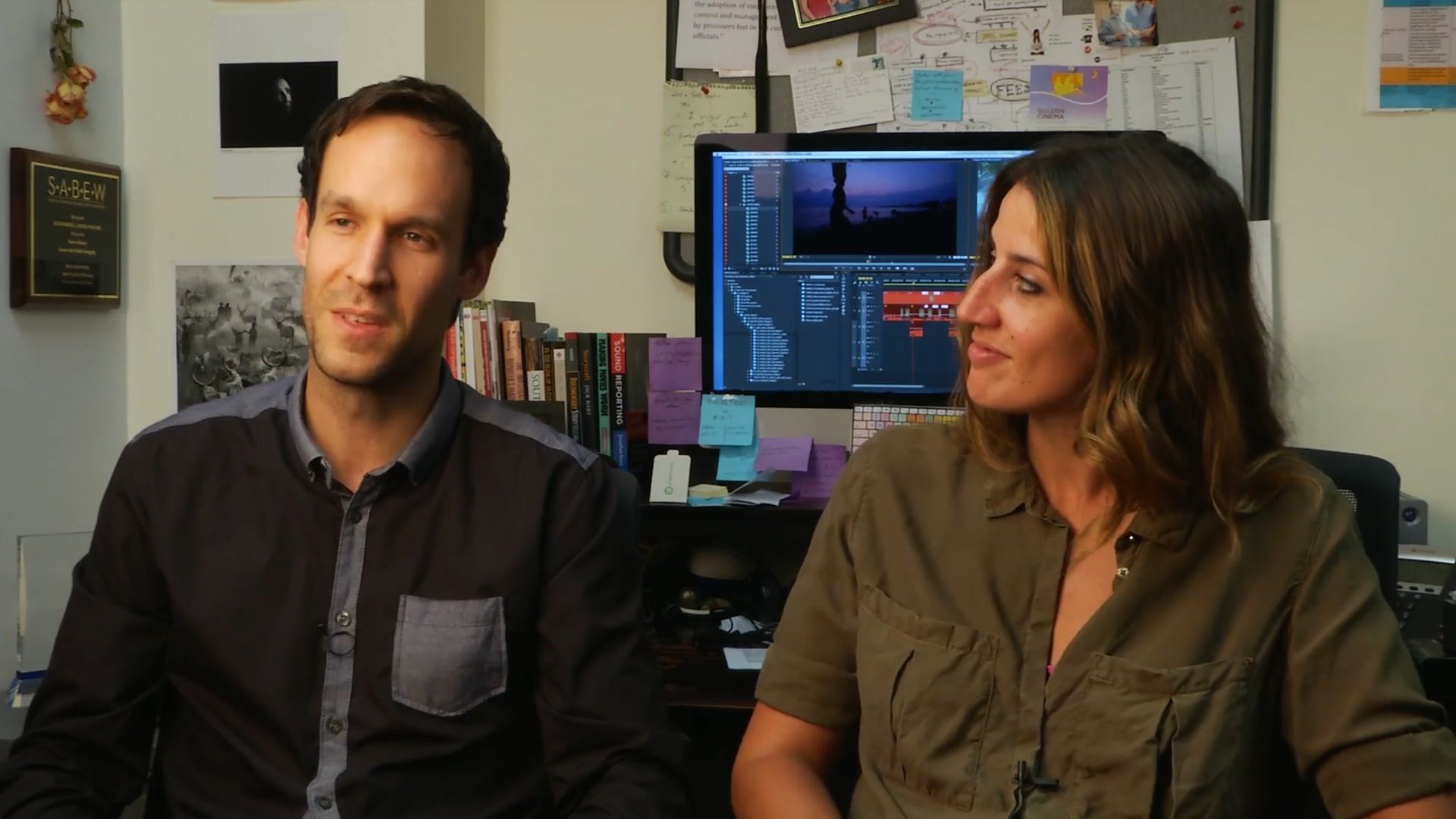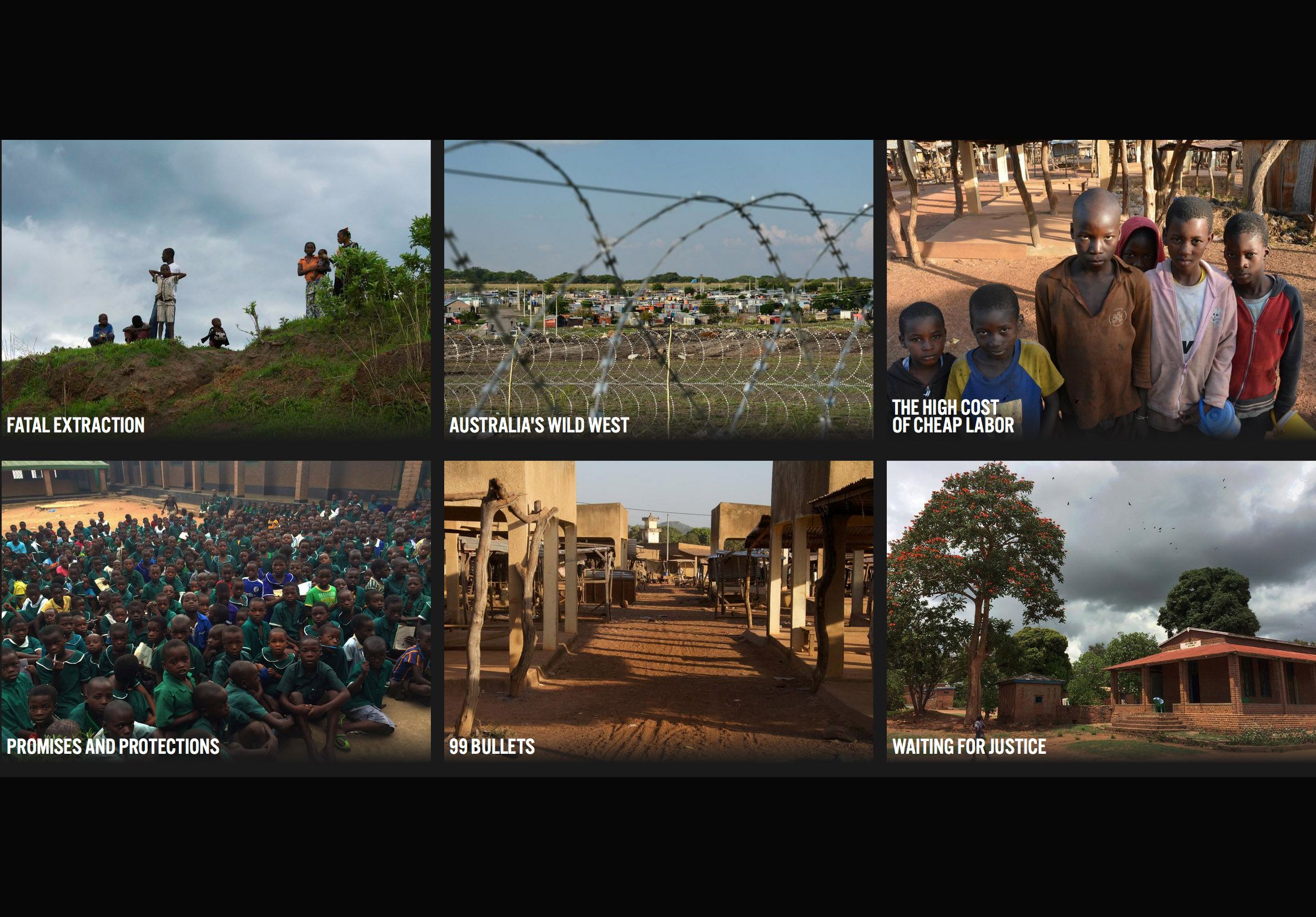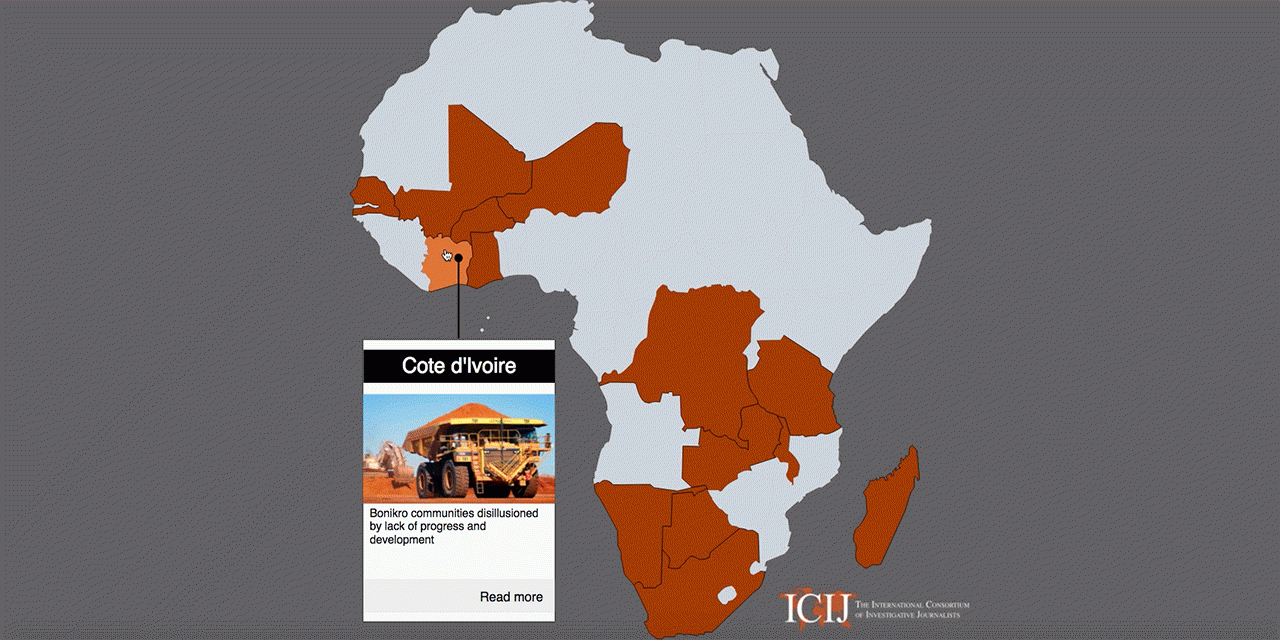Objective:
Students will be able to analyze the content and structure of the Fatal Extraction project in order to summarize the project and evaluate its connections to their lives
Warm up:
1. Look at your classroom. What items in your classroom do you think might be made from some of the following elements?
- Gold
- Diamonds
- Platinum
- Gold
- Copper
2. Which of the following items do you think are made from copper? Take a vote as a class. (Ask your teacher to check the Educator Notes for the answer)
- Plumbing
- Jewelry
- Electrics in a house
- Radios
- TV sets
- Air conditioners and heaters
Introducing the Lesson:
The project Fatal Extraction investigates Australian companies that mine for these elements in over 33 African countries. One of those companies, Anvil, mines heavily for copper.
1. Read the opening lines of the project Fatal Extraction below. On your own, or with a partner, predict what this project will explore. Who will be part of it? What might it find?
"Australia is a giant in African mining, but its vast — and in some cases deadly — footprint has never been examined. Australian-listed mining companies are linked to hundreds of deaths and alleged injustices which wouldn’t be tolerated in better-regulated nations."
2. Make a list of questions that you hope to answer as you review the project.
Introducing resource 1: Fatal Extraction
Today’s lesson will look at the content and structure of Fatal Extraction.
Start by reviewing the Fatal Extraction resources individually or in small groups.
Use the questions attached to track your understanding of the details and structure of this resource.
Keep track of the following as your review the resource:
- What slides made the largest impact on you?
- What role did design play in grabbing your attention?
- Why do you think the author chose to represent this detail in this way visually
Option for exploring the resource in small groups:
-
The project is broken into six chapters. (see photo below) Break into groups of six.
-
Assign each person one chapter of the project to explore and prepare to report on.
-
Use the attached questions to inform your summary. Be prepared to share details.
-
Share your summaries with each other to prepare for a discussion with the class.
Introducing Resource 2: "Meet the Journalists: Eleanor Bell and Will Fitzgibbon"
1. Consider the following and discuss:
- What do you think the authors wanted you to take away from this project?
- Why do you think the authors chose this visual medium to present the story?
2. Watch the “Meet the Journalist” video and answer the attached questions.
3. Review your answers and brainstorm the following:
- What information did you learn from the video that was not part of the interactive resource?
- What additional questions would you like to ask the journalists?
Challenge: Get your questions for the journalists answered! Email [email protected] to get your questions sent directly to Will and Eleanor.
Introducing Resource 3: How We Created Fatal Extraction (optional extension)
1. Read the blog post to learn more about how Will and Eleanor conducted their research and built Fatal Extraction.
2. Use the following quotation from the blog to start a discussion about the role of a journalist.
"As part of our mission at ICIJ, we work on the principle that local journalists, not foreign correspondents, have unique skills and insight to hold the powerful to account – be it banks, businesses or bigwigs – and by working collaboratively we can tell more complete stories that draw on otherwise untapped local knowledge."
- What do you think Fitzgibbon means when he says, “hold the powerful to account”?
- How does the author differentiate between the role of a local journalist and foreign correspondent?
Extension Activities:
Option 1: Interview members of your community about their experiences working for large companies. In what ways have their experiences been similar to/different from the subjects interviewed in Fatal Extraction? Interview 5-10 people.
- Presentation option A: Use slides from Fatal Extraction to create a presentation that what you found to be similar and different about the working conditions and experience with management.
- Presentation option B: Select one or two subjects from your interview and create a short slide show presentation presenting their experiences working in your community. Use the slides of Fatal Extraction as inspiration for the design of your presentation.
Option 2: How could you and your classmates support the advocacy work that is described in the article? In what way does this story relate directly to you?
- Using your own research and the content from Fatal Extraction, write a letter or create a video that demonstrates what you think needs to change about the practices of Australian mining companies in Africa. Consider, who would need to see the video or read the letter? How would you get in touch with them?
- Brainstorm with your class to identify a way to raise awareness for this issue. Establish a plan that uses content from Fatal Extraction and your own research about the current status of mining practices in Africa. Consider, who needs to know about this? What do you they need to know and why?
Option 3: Select an item from your class and research its origin. Consider the following:
- How did that object get to your classroom? Trace its journey back to where it was made and who was involved in its production.
- What items in your classroom come from another country?
What were the conditions of the people involved in creating that object? How does that compare to the conditions of the subjects of the Fatal Extraction project?
CCSS.ELA-LITERACY.RI.9-10.2
Determine a central idea of a text and analyze its development over the course of the text, including how it emerges and is shaped and refined by specific details; provide an objective summary of the text.
CCSS.ELA-LITERACY.RI.9-10.7
Analyze various accounts of a subject told in different mediums (e.g., a person’s life story in both print and multimedia), determining which details are emphasized in each account.
In this lesson students explore Fatal Extraction, a multi-media project that examines the impact of Australian mining companies on African communities. Accusations of violence, negligence, dangerous environmental practices and poor safety regulations are explored using photographs, videos, court documents and interviews. Through independent exploration and discussion, students are invited to engage in the following questions:
- What is a company’s responsibility to its employees and their communities?
- How might a company’s practices change when working in another country and what might be the negative impacts?
- What steps should you take when something unjust is happening in your community?
Here is a link to the interactive website that is used to present Bell and Fitzgibbob's reporting.
Note: The lesson plan is designed to include discussions facilitated by the teacher, but can be adapted for students to explore the project independently. The answer to warm up question number 2 is that ALL of the items listed use copper.







